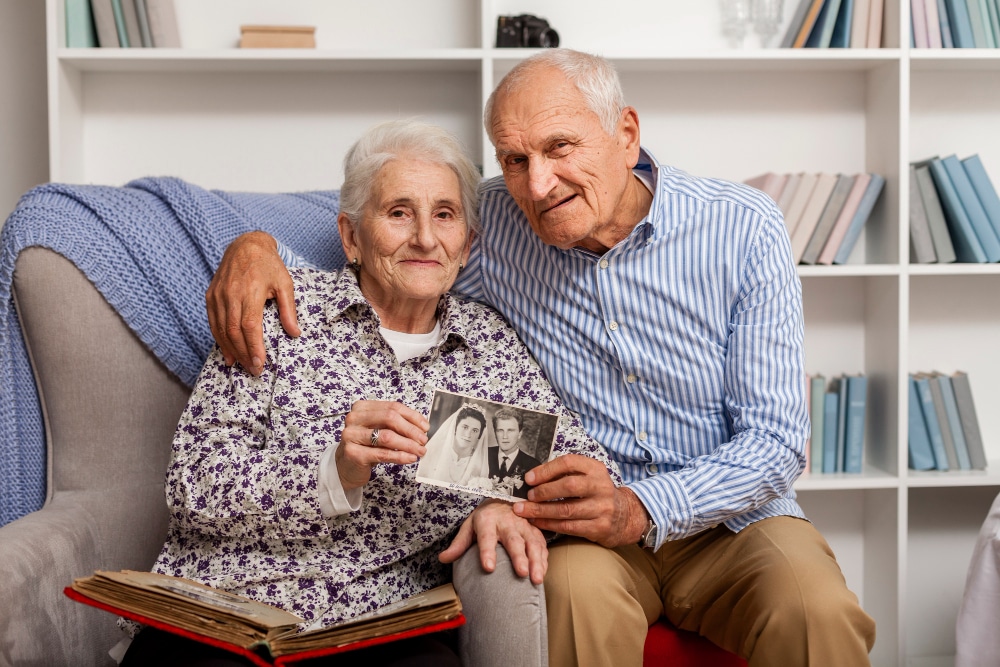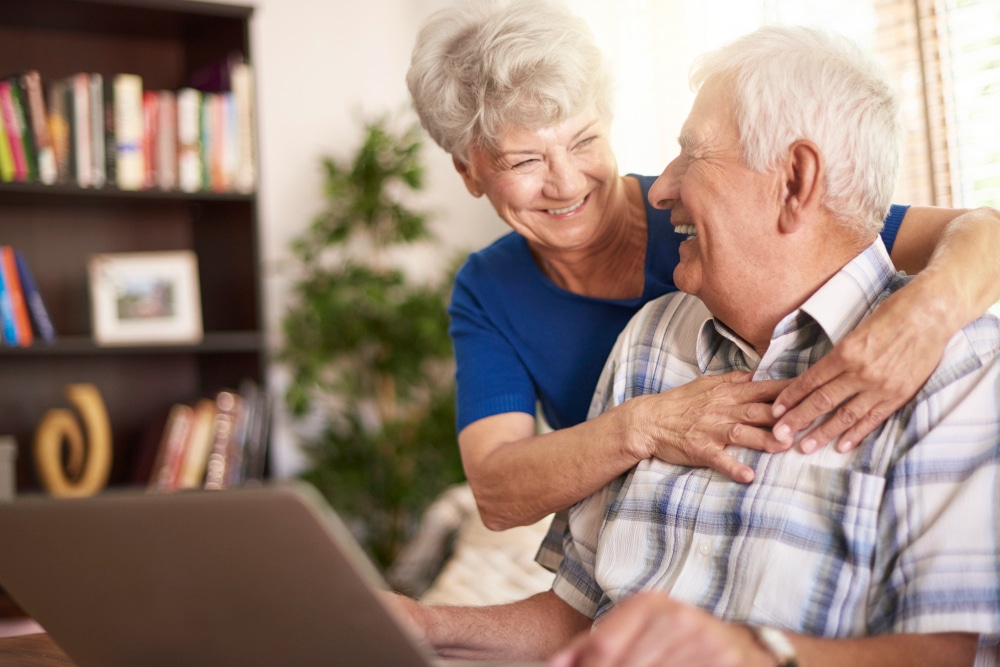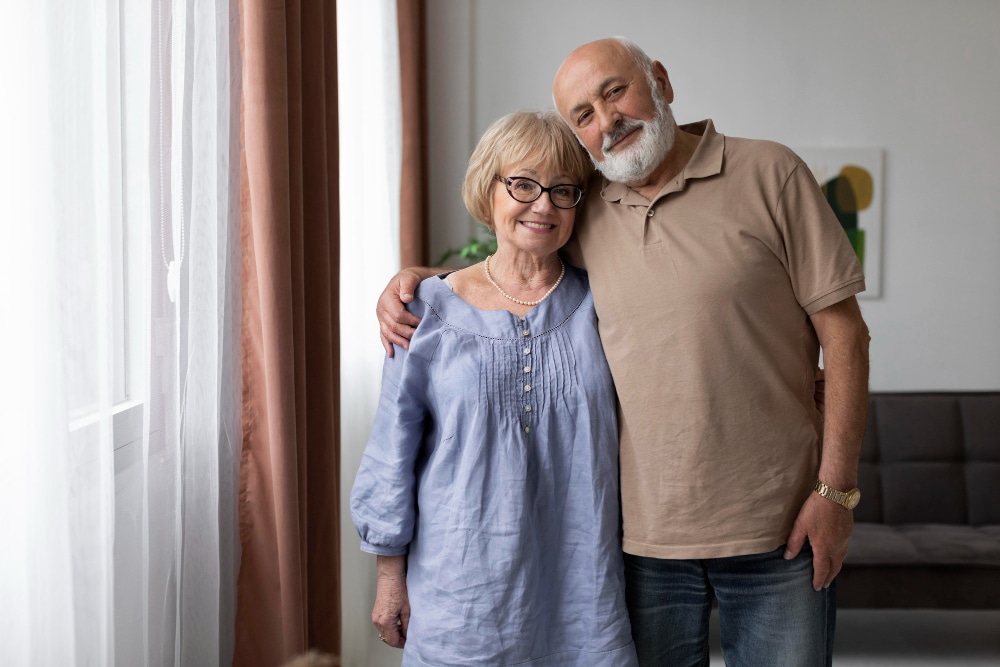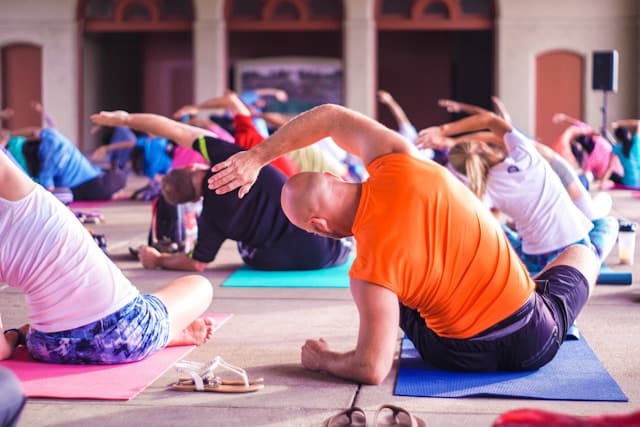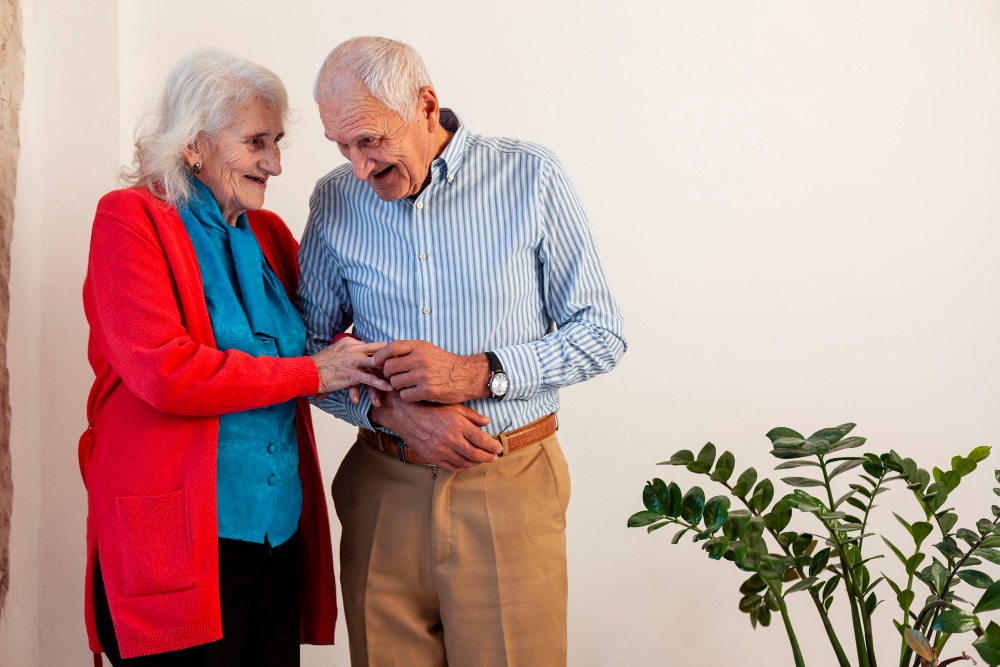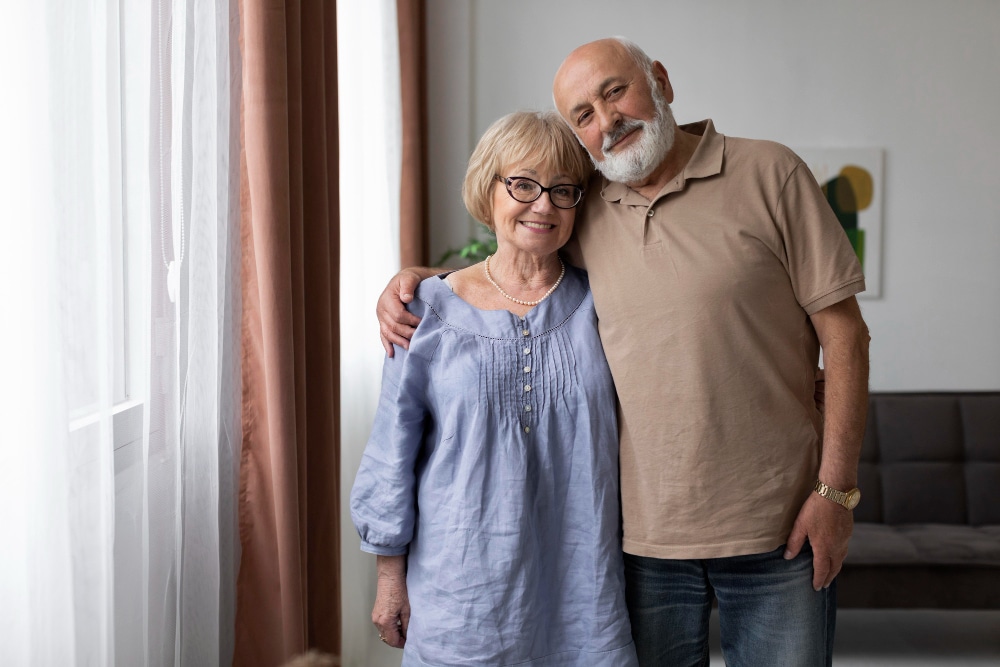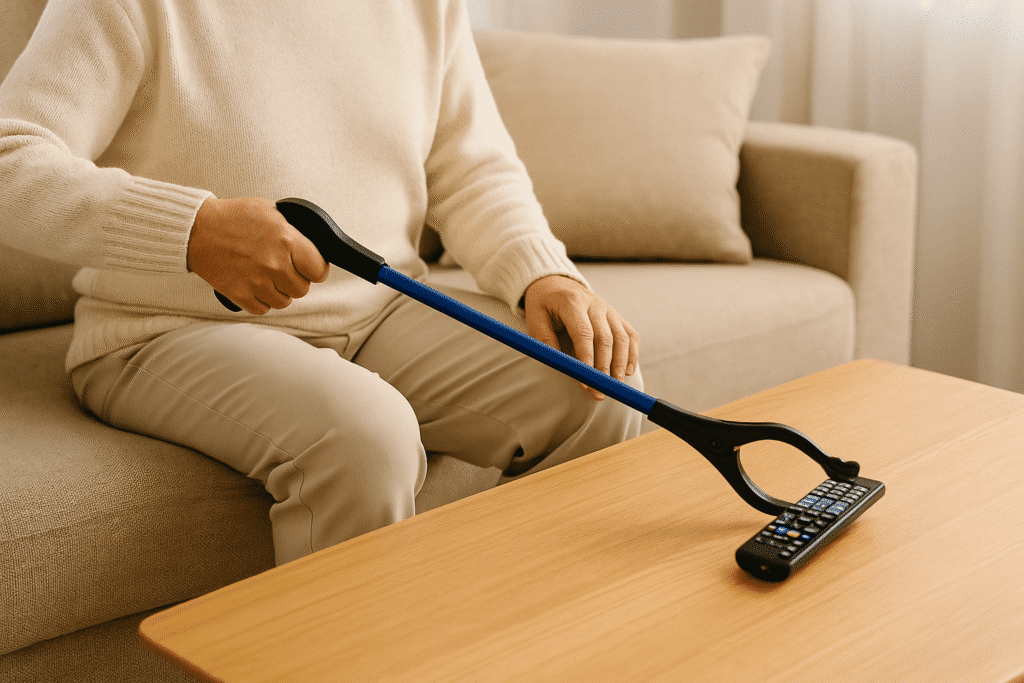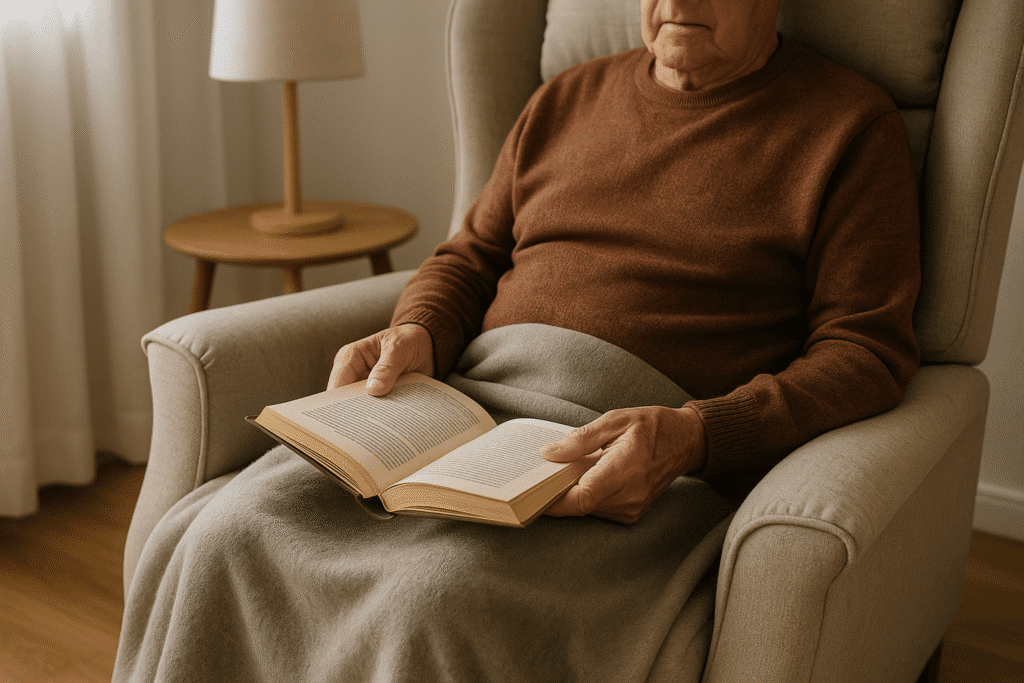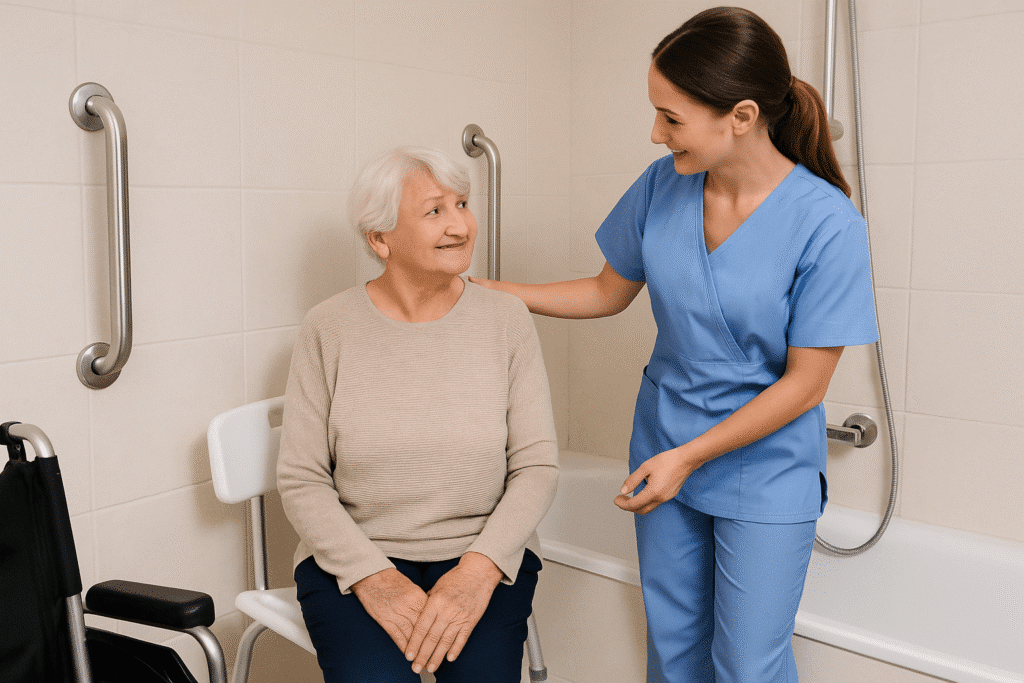Staying steady starts with strong legs. As we age, keeping our legs active helps us walk confidently, reduce fall risk, and stay independent longer.
If you’re wondering how to strengthen legs for seniors safely at home, these simple exercises can help you build strength, balance, and flexibility without needing gym equipment.
Key Summary:
To strengthen legs for seniors, focus on simple, low-impact exercises that build stability and muscle safely. Combine moves like chair squats, calf raises, and seated leg lifts with gentle activities such as walking, Tai Chi, or water aerobics.
Why Leg Strength Matters with Age
As we get older, our muscles naturally lose mass and strength, a condition called sarcopenia. This makes it harder to climb stairs, get up from a chair, or keep steady while walking.
Weak legs are one of the main reasons seniors experience balance problems and falls.
In fact, nearly 40% of older adults in the U.S. report difficulty walking or climbing stairs, and about 1 in 4 experience a fall each year.
Benefits of stronger legs for seniors:
- Improves balance and coordination
- Helps prevent falls and injuries
- Makes walking, standing, and stair climbing easier
- Reduces knee and hip pain
- Increases confidence and independence in daily life
How to Strengthen Legs for Seniors
The best leg exercises for older adults focus on building strength gently while protecting the joints. You don’t need fancy equipment, just a sturdy chair, good shoes, and a few minutes a day.
Below are simple, therapist-recommended moves that you can do safely at home.
1. Chair Squats (Sit-to-Stand Exercise)
Chair squats strengthen your thighs, hips, and glutes, the muscles you rely on for getting up, sitting down, or climbing stairs. It’s one of the most functional exercises you can do as a senior because it mimics everyday movement.
How to do it:
- Sit in a sturdy chair with your feet flat on the floor and shoulder-width apart.
- Cross your arms over your chest or keep your hands on your thighs for support.
- Lean slightly forward and press through your heels to stand up slowly.
- Lower yourself back down with control until you lightly touch the chair.
- Repeat 10–15 times for 2–3 sets.
Tip: If this feels difficult, start with a higher chair or place a cushion underneath.
2. Seated Leg Raises
This exercise targets the quadriceps (front thigh muscles) and helps improve knee stability. It’s perfect for seniors with limited mobility or anyone recovering from knee pain, since it’s done sitting down.
How to do it:
- Sit tall in a chair with your back straight and feet flat on the floor.
- Slowly lift one leg until it’s straight, keeping your thigh on the chair.
- Hold for 3–5 seconds, then lower it down gently.
- Repeat 10–15 times on each leg.
Tip: Add light ankle weights as your strength improves.
3. Calf Raises
Calf raises strengthen your lower legs and ankles, helping with walking and balance. Strong calves also make it easier to climb stairs and keep you steady when standing.
How to do it:
- Stand behind a sturdy chair or countertop for balance.
- Place your feet hip-width apart.
- Rise up onto your toes slowly, lifting your heels off the floor.
- Hold for 2–3 seconds, then lower your heels back down gently.
- Do 10–15 repetitions, for 2–3 sets.
Tip: Once it feels easy, try doing them on one leg at a time or on a step for added range of motion.
4. Side Leg Lifts (Hip Abductions)
Side leg lifts strengthen your hips, outer thighs, and glutes, key muscles for balance and stability. Strong hip muscles make it easier to walk safely, step sideways, and recover if you start to lose balance. Many seniors I’ve worked with notice better steadiness within just a few weeks of doing these regularly.
How to do it:
- Stand tall behind a sturdy chair, holding it lightly for support.
- Keep your toes pointing forward and lift one leg slowly out to the side.
- Avoid leaning or tilting your upper body.
- Hold for 2–3 seconds, then lower your leg back down with control.
- Repeat 10–15 times per leg for 2–3 sets.
Tip: If standing is difficult, do this exercise lying on your side instead.
5. Step-Ups
Step-ups mimic the movement of climbing stairs and build strength in your thighs, calves, and hips. They’re excellent for improving coordination and overall leg endurance. If you ever feel winded or unsteady when using stairs, this is the exercise to focus on.
How to do it:
- Find a low, stable step or sturdy platform (about 4–6 inches high).
- Hold onto a wall or railing for support if needed.
- Step up with one foot, pressing through your heel.
- Bring your other foot up to meet it, then step back down slowly.
- Repeat 10–12 times on each leg.
Tip: Start with a low surface and increase the height only when you feel confident.
6. Mini Lunges (Wall-Supported)
Mini lunges strengthen both the front and back of your legs, including the quadriceps, hamstrings, and glutes. They also help improve flexibility in your hips and knees, making it easier to kneel, bend, or pick up things from the floor.
How to do it:
- Stand near a wall or sturdy chair for support.
- Step one foot forward and keep your back heel lifted slightly.
- Bend both knees a little, lowering your body straight down.
- Keep your chest tall and knees aligned with your toes.
- Push through your front heel to return to standing.
- Repeat 8–10 times per side for 2 sets.
Tip: Avoid going too low; small movements are enough to build strength safely.
7. Ankle Circles and Toe Lifts
This simple exercise keeps your ankles flexible and boosts blood flow in your lower legs. It’s great for preventing stiffness, swelling, and balance problems. I often suggest this one to seniors who spend a lot of time sitting; it keeps the joints active and reduces that “heavy leg” feeling.
How to do it:
- Sit in a sturdy chair with both feet slightly off the floor.
- Slowly rotate your ankles in a circle, 10 times clockwise, then 10 times counterclockwise.
- Then, place your feet down and lift your toes up toward your shins while keeping your heels on the floor.
- Hold for 2 seconds, then relax.
- Repeat 10–15 times.
Tip: Do this a few times a day, while watching TV, reading, or during travel, to keep your circulation healthy.
Low-Impact Activities That Build Leg Strength
Not every leg exercise has to feel like a workout. Gentle, low-impact activities can strengthen your legs, improve balance, and keep your joints moving comfortably. These are great to mix in with the exercises above to stay active throughout the week.
Walking
Walking is one of the simplest and most effective ways for seniors to build leg strength. It keeps your hips, knees, and ankles flexible while improving circulation and endurance. Even short walks throughout the day make a difference over time.
Tips to get the most out of walking:
- Aim for 20–30 minutes a day, or break it into two shorter walks.
- Wear supportive shoes with good grip and cushioning.
- Walk on even surfaces like sidewalks or indoor tracks to reduce fall risk.
- Use walking poles or a light cane for extra stability if needed.
- Walk with a friend or family member for safety and motivation.
Read more: Best walkers with seats for seniors
Tai Chi or Yoga for Seniors
Tai Chi and gentle yoga improve leg strength while helping with balance, posture, and flexibility. These slow, controlled movements build endurance in the thighs and calves without putting stress on the joints.
Many seniors find Tai Chi especially calming; it combines deep breathing with movement, helping reduce both stiffness and stress.
Benefits include:
- Strengthens core and lower body muscles
- Improves balance and coordination
- Helps prevent falls and joint stiffness
- Reduces stress and promotes relaxation
Water Aerobics or Pool Walking
Exercising in water is one of the most joint-friendly ways to strengthen your legs. The water provides gentle resistance while supporting your body weight, which makes it ideal for people with arthritis, knee pain, or limited mobility.
Benefits of water-based exercise:
- Builds muscle without joint strain
- Improves endurance and circulation
- Reduces swelling in ankles and legs
- Keeps you cool and comfortable while exercising
How Often Should Seniors Do Leg Exercises?
Most seniors should aim to strengthen their legs 2–3 times a week, with light movement or stretching on other days. Regular activity helps maintain muscle tone, balance, and mobility without overworking your joints.
For example, you might do a strength session on Monday, Wednesday, and Friday, while walking or stretching on the other days. What matters most is consistency; doing a little every day is better than doing too much once in a while.
If you’re just starting out, begin slowly. Even 10–15 minutes a day of light leg exercises can make a noticeable difference in a few weeks. As you get stronger, you can add more repetitions, longer walks, or gentle resistance bands to challenge your muscles safely.
Here’s a simple weekly routine you can follow at home:
| Day | Focus | Example Activities |
|---|---|---|
| Monday | Strength | Chair squats, seated leg raises, calf raises |
| Tuesday | Balance | Tai Chi, side leg lifts, ankle circles |
| Wednesday | Mobility | Walking 20–30 minutes, gentle stretches |
| Thursday | Strength | Step-ups, mini lunges, seated leg raises |
| Friday | Flexibility | Chair yoga or gentle stretching |
| Saturday | Low-Impact Cardio | Water aerobics or pool walking |
| Sunday | Rest or Light Movement | Easy stroll, gentle leg stretches |
Read more: Daily living tips for older people
Final Words
Strong legs are the foundation of steady movement and independent living. With just a few minutes a day, you can improve your balance, flexibility, and confidence using simple, low-impact exercises that protect your joints.
Whether it’s walking around the block, doing chair squats, or joining a gentle Tai Chi class, every bit of movement adds up. Stay consistent, listen to your body, and celebrate small improvements; they make a big difference over time.
FAQs
Can I still strengthen my legs if I have arthritis or knee pain?
Yes. Low-impact movements like seated leg raises, ankle circles, and water aerobics help strengthen muscles around the joints without causing strain. Always move slowly, use support when needed, and talk with your doctor or therapist before starting new exercises.
What if I can’t stand for long periods?
You can still build strength with seated exercises. Try knee extensions, seated marches, or ankle movements while sitting in a sturdy chair. These improve circulation and flexibility without putting pressure on your knees or hips.
How long does it take to notice results?
Most seniors start feeling stronger and steadier after about four to six weeks of consistent exercise. Small daily efforts, like walking more or doing short leg routines, lead to lasting improvements in mobility and confidence.
Should I use weights or resistance bands?
Start with your body weight first. Once you’re comfortable with the movements, light ankle weights or resistance bands can help you build strength safely. Gradually increase resistance, but focus on proper form rather than heavy weight.
Mark has over 10 years of hands-on experience in senior care. He founded ElderSavvy to provide honest, easy-to-follow advice on tools that support comfort, safety, and independence. Mark oversees all content and product reviews, guided by insights from caregivers, health professionals, and real-life use.

